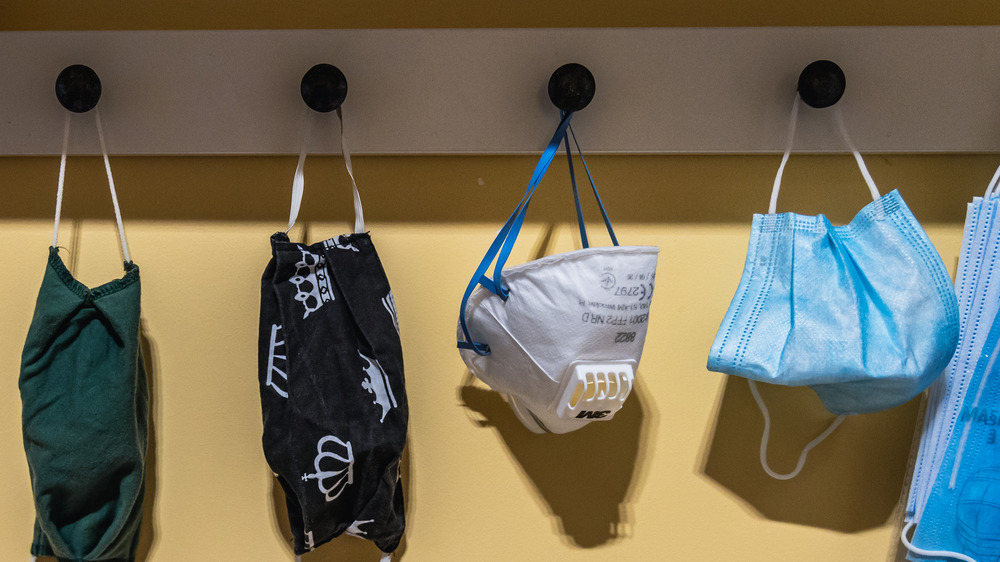The Types Of Face Masks You Shouldn't Be Layering
More than one year into the COVID-19 pandemic, mask wearing has become a normal part of everyday life — one which we would have never expected in 2019. Since the early days of the pandemic, the Centers for Disease Control and Prevention (CDC) has recommended wearing a face mask to slow the spread of COVID-19. However, in late January Dr. Anthony Fauci, the nation's leading infectious disease specialist, stated that wearing two masks would likely be more effective than one alone — something he chalked up to "common sense" (via CNBC).
Weeks later, the CDC released a statement stressing the importance of wearing a mask with a snug and "proper fit" to ensure maximum efficacy in mitigating the spread of COVID-19. On an individual level, the CDC found that an unknotted surgical mask alone kept out "56 percent of particles from a simulated cough," while a cloth mask alone blocked nearly 51 percent. Together, layering a cloth mask on top of a surgical mask increased efficacy to 85 percent (via CDC).
The CDC also found that wearing a cloth mask over a surgical mask, or knotting the ear loops and tucking in the sides of a surgical mask, decreased "exposure to potentially infectious aerosols" by approximately 95 percent when both parties wore properly fitted masks. They also recommended the use of mask fitters as a means to improve the fit of your mask. While aiming for the most secure fit of your mask makes sense, the CDC warns that not all masks should be layered.
These are the mask combinations you should steer clear of
Even though layering a cloth mask over a surgical mask is an effective form of double masking, the CDC warns against layering two surgical masks. They report that surgical or "medical procedure" masks are not intended to fit snugly on the face. The point of the additional cloth mask on top of a surgical mask is to flatten the sides and top of the surgical mask against the skin, allowing for less chance of viral particles to enter or exit. Two layered surgical masks would simply lead to more ill-fitting mask coverage.
The CDC also discourages layering any type of mask above or below a KN95 mask. These types of masks are intended to stand alone. Thanks to their unique shape, which forms an air tight seal, KN95 masks are 95 percent effective against viral particles on their own. The same goes for N95 masks. Double masking with either a KN95 or N95 respirator will likely lead to difficulty breathing — which can be dangerous.
While the CDC is not recommending double masking at this time, they are encouraging everyone to wear at least one properly fitted mask in public and when social distancing measures can not be followed. If you're transitioning to double masking, now may be a good time to find stylish and effective cloth masks to show the world when you're out and about.


